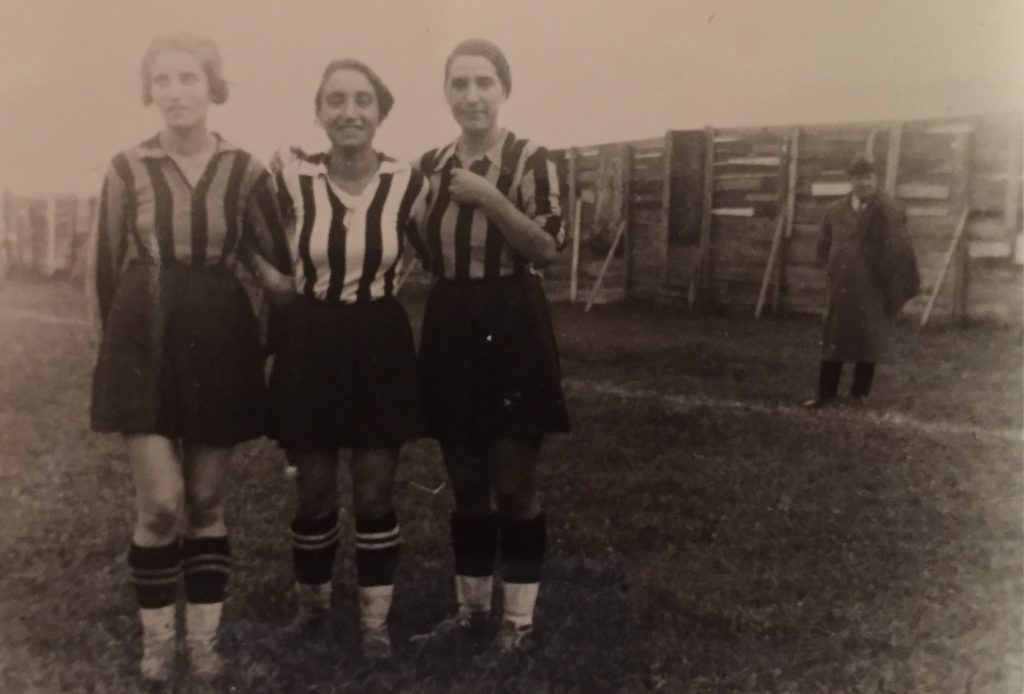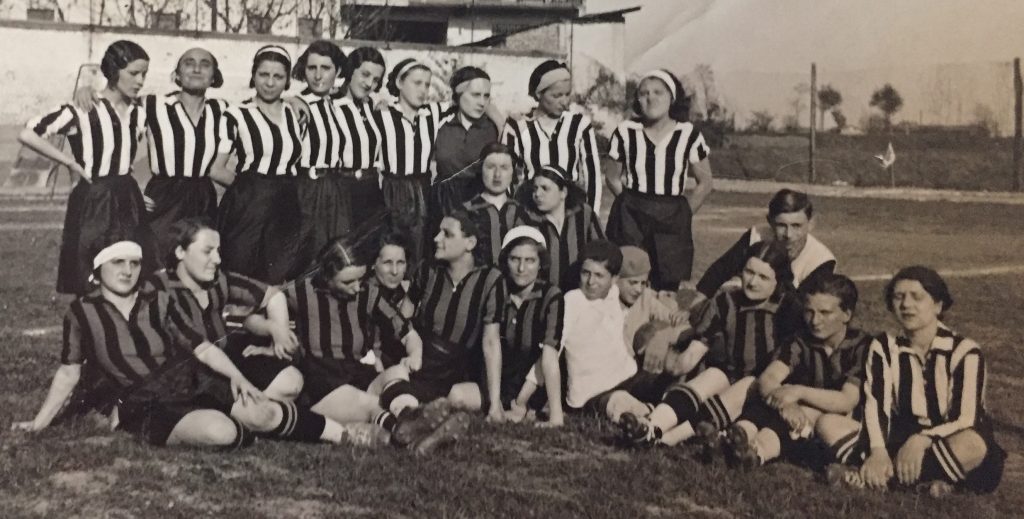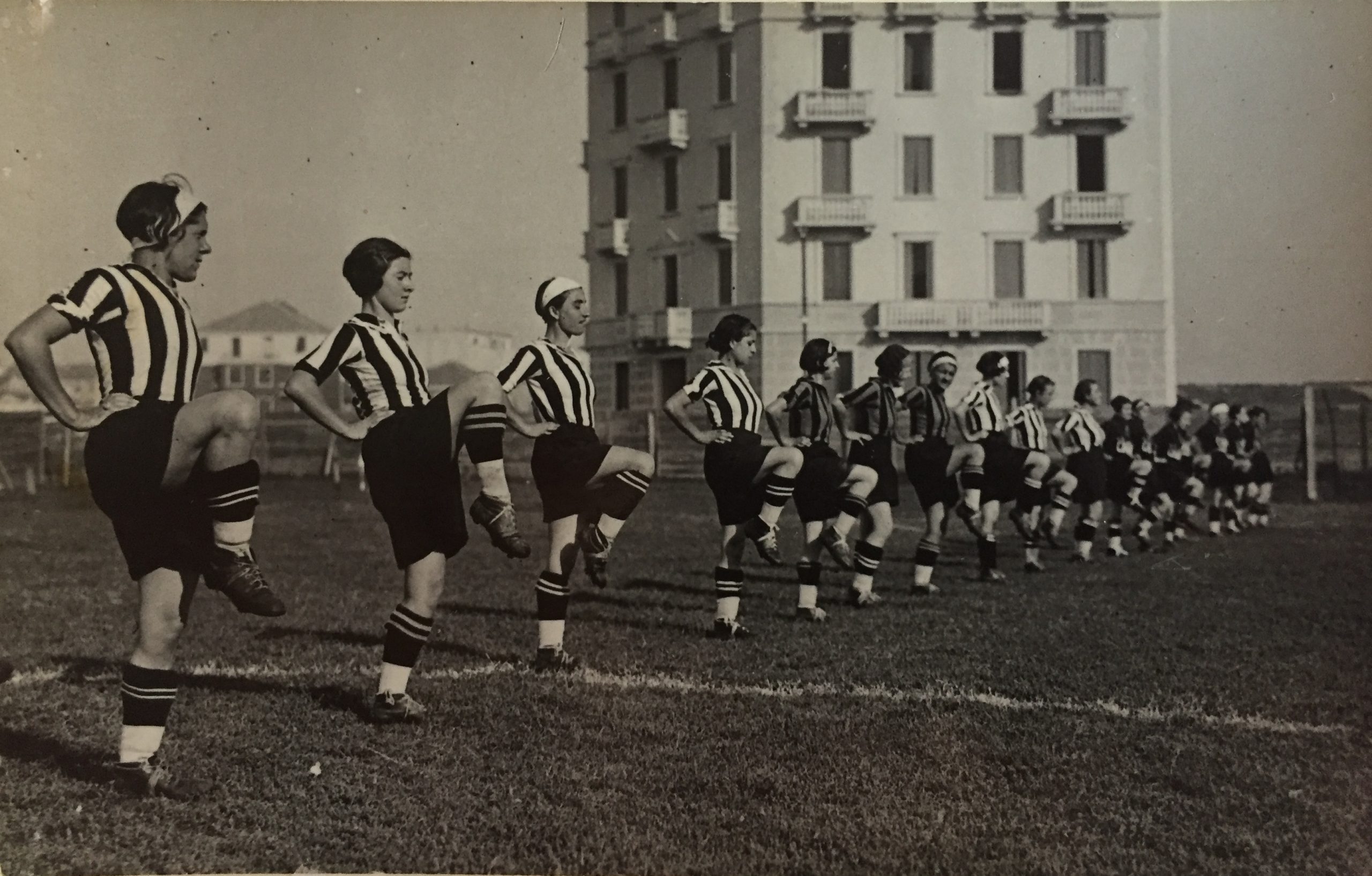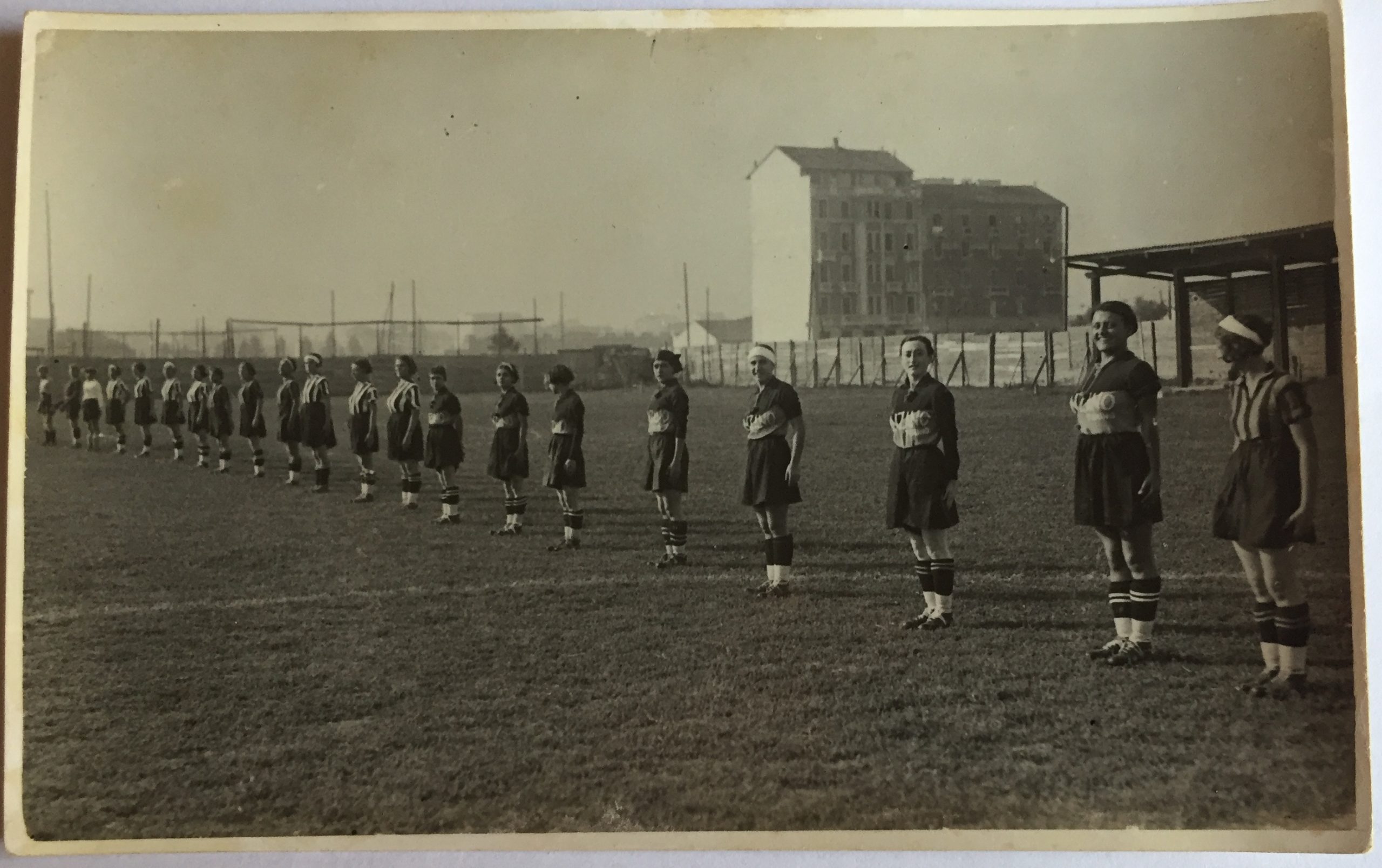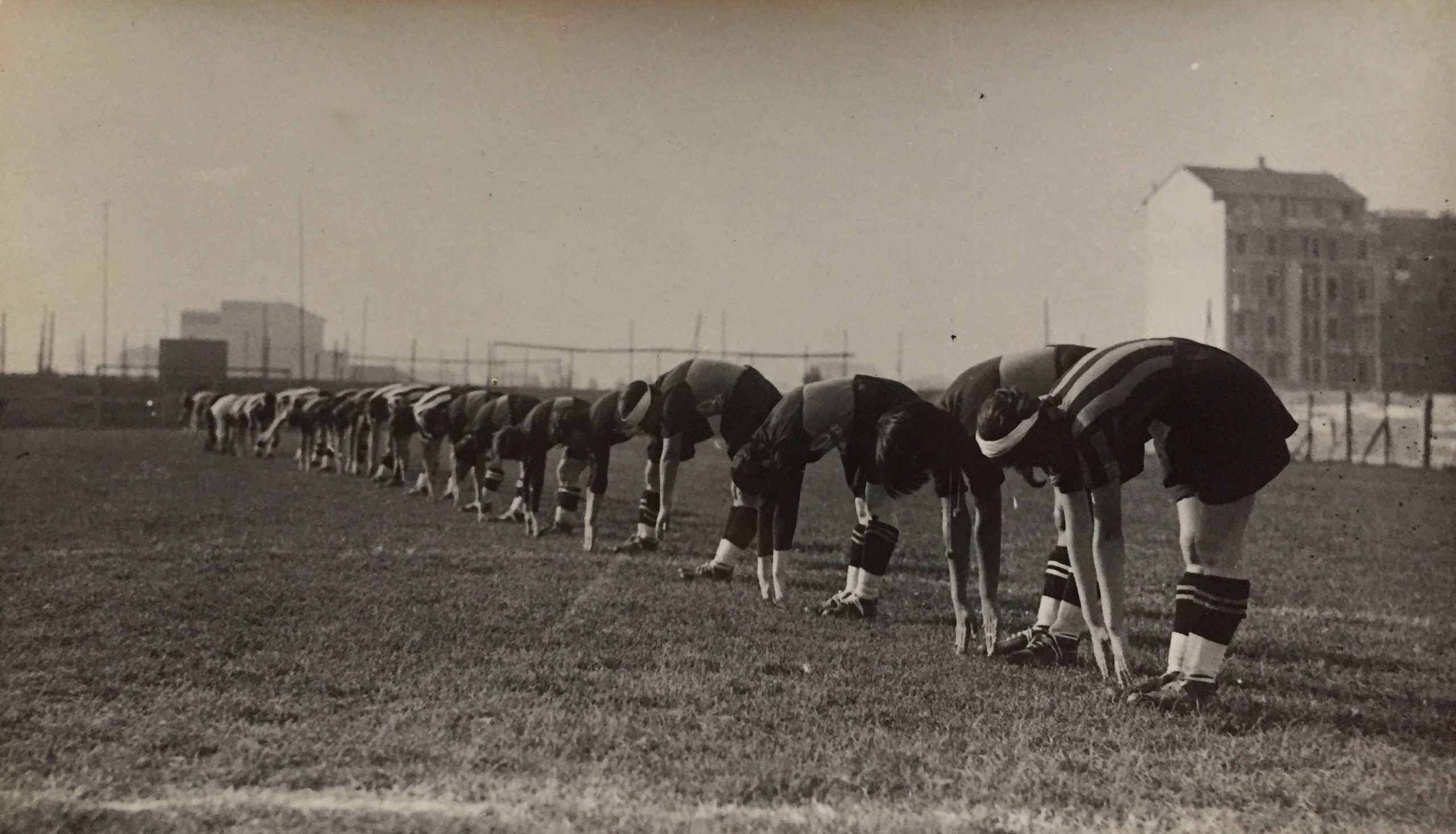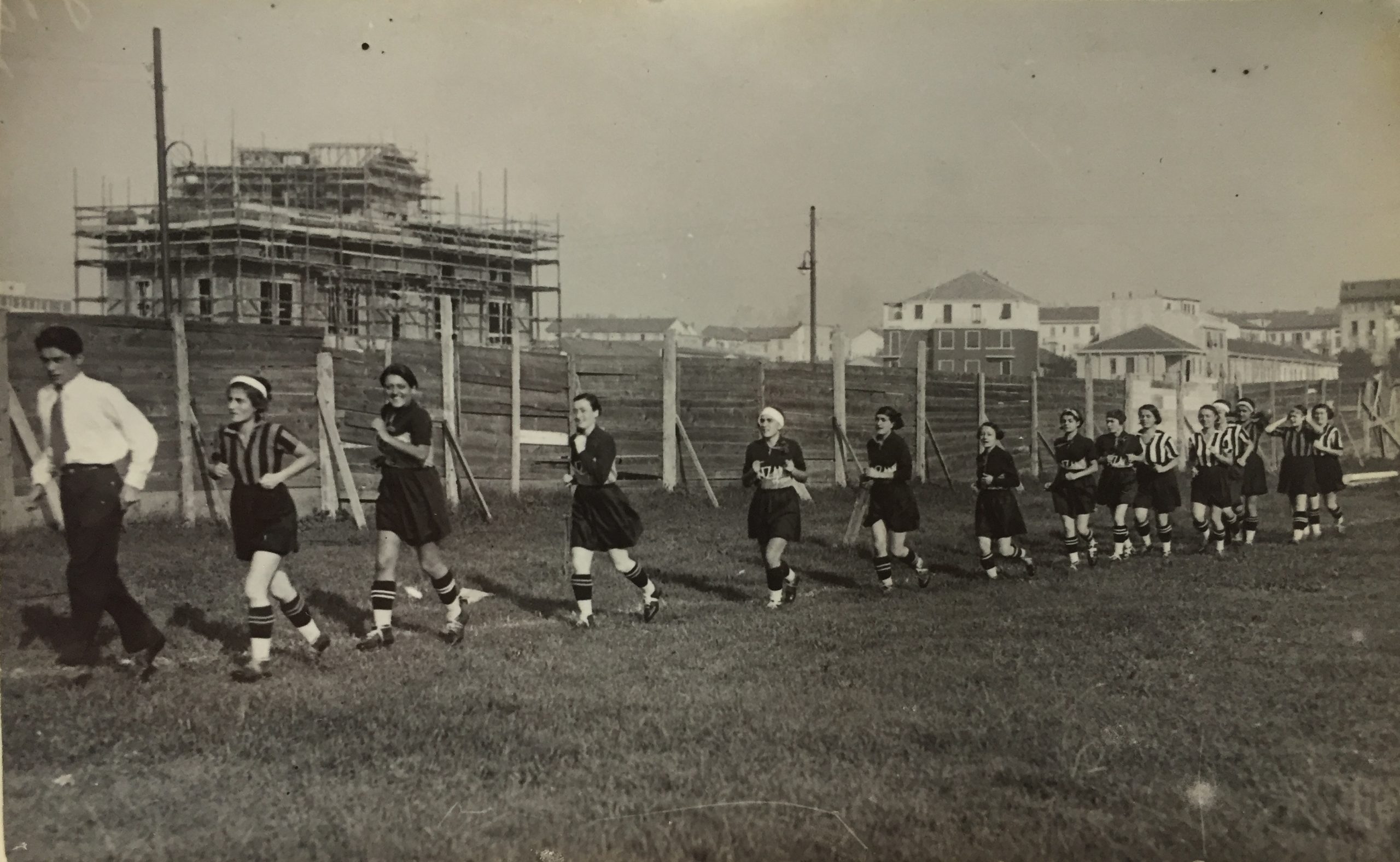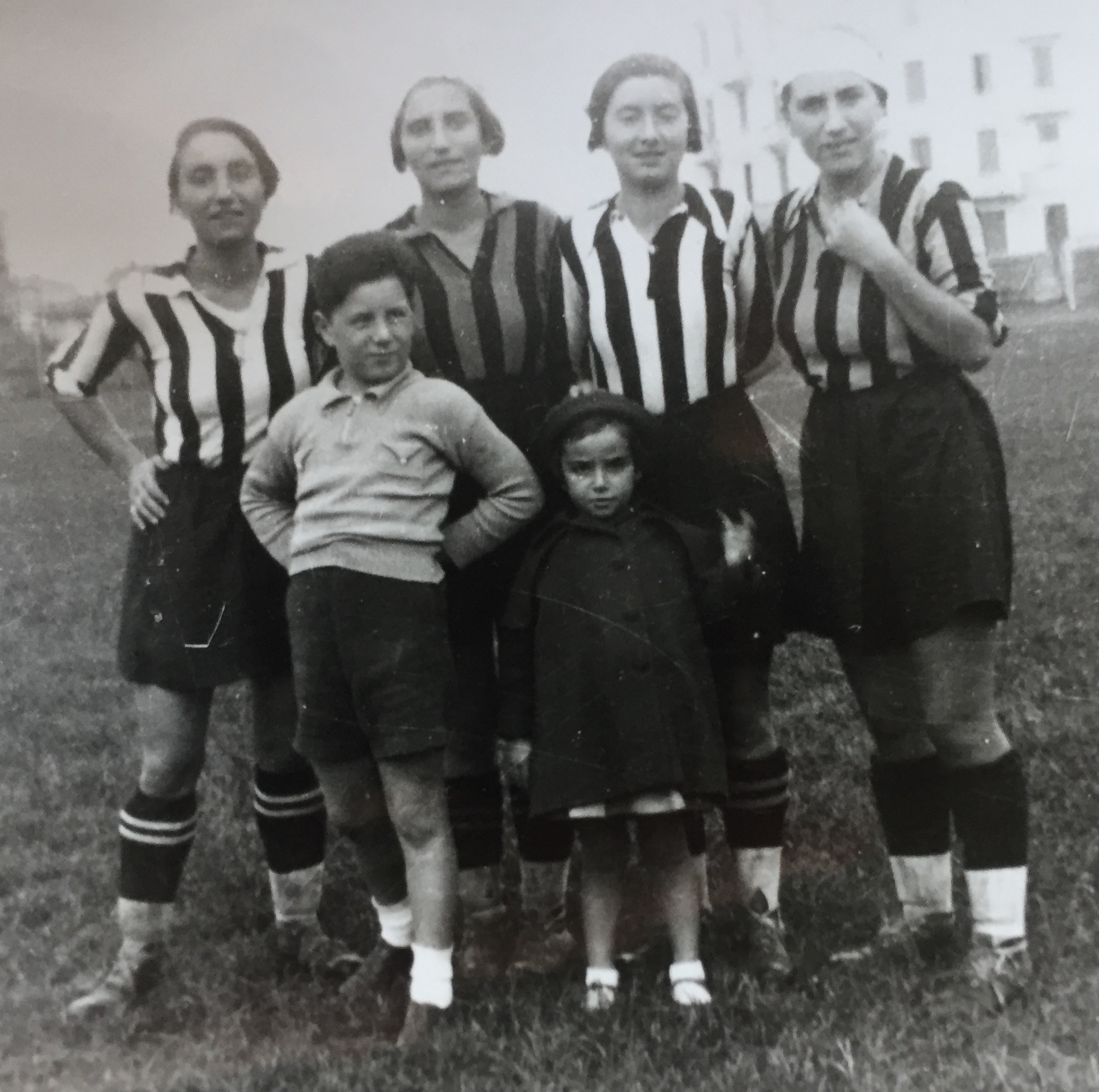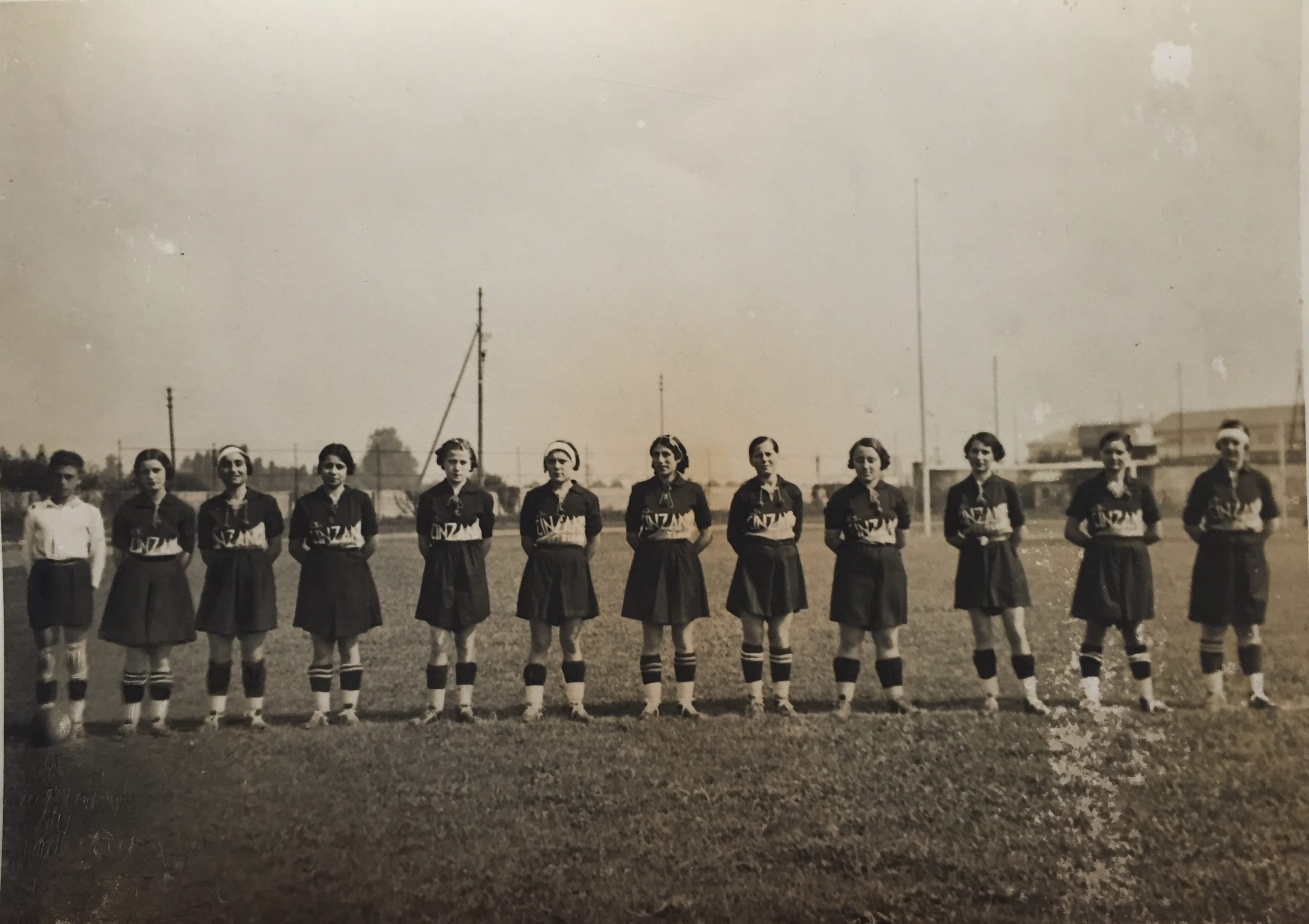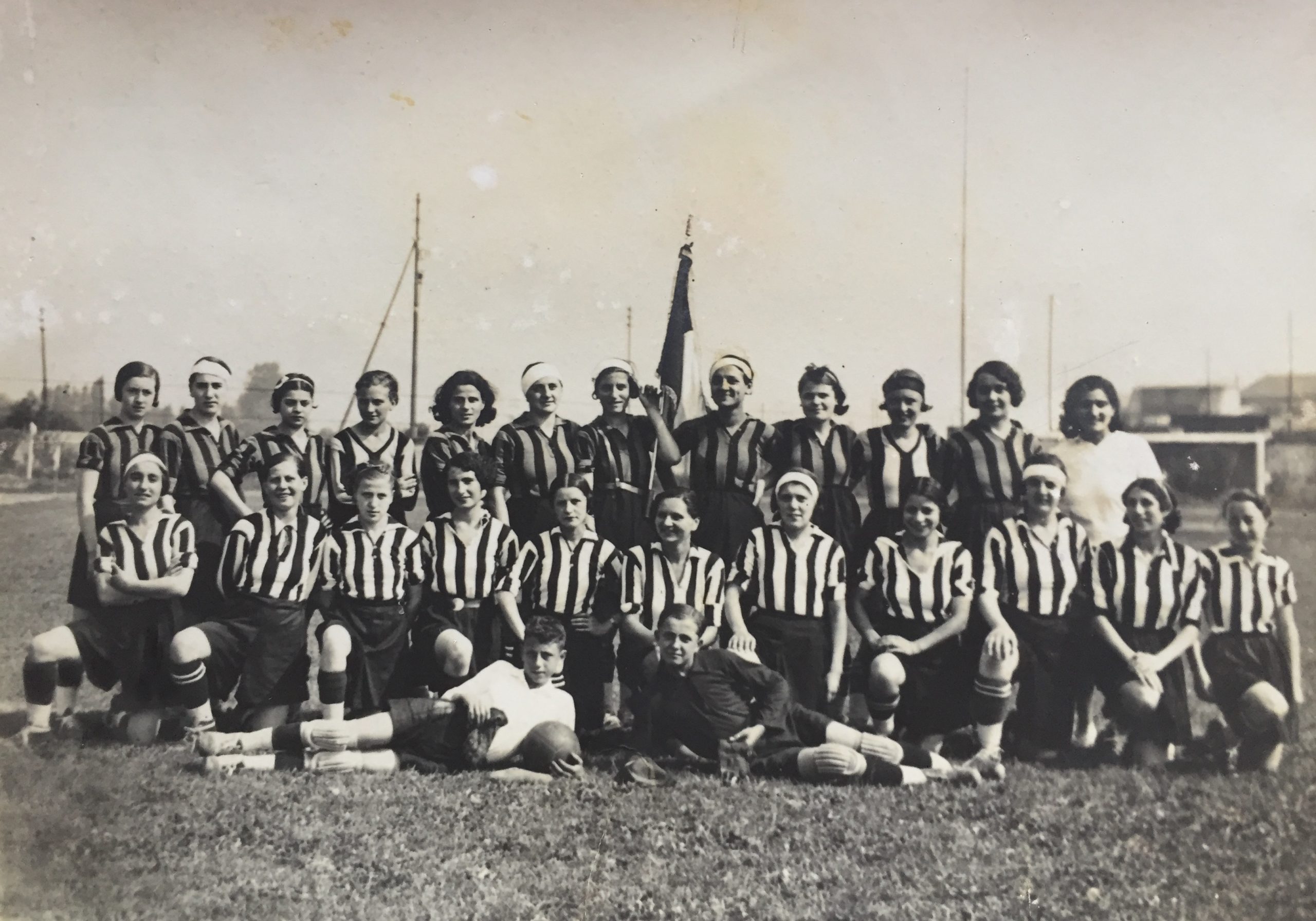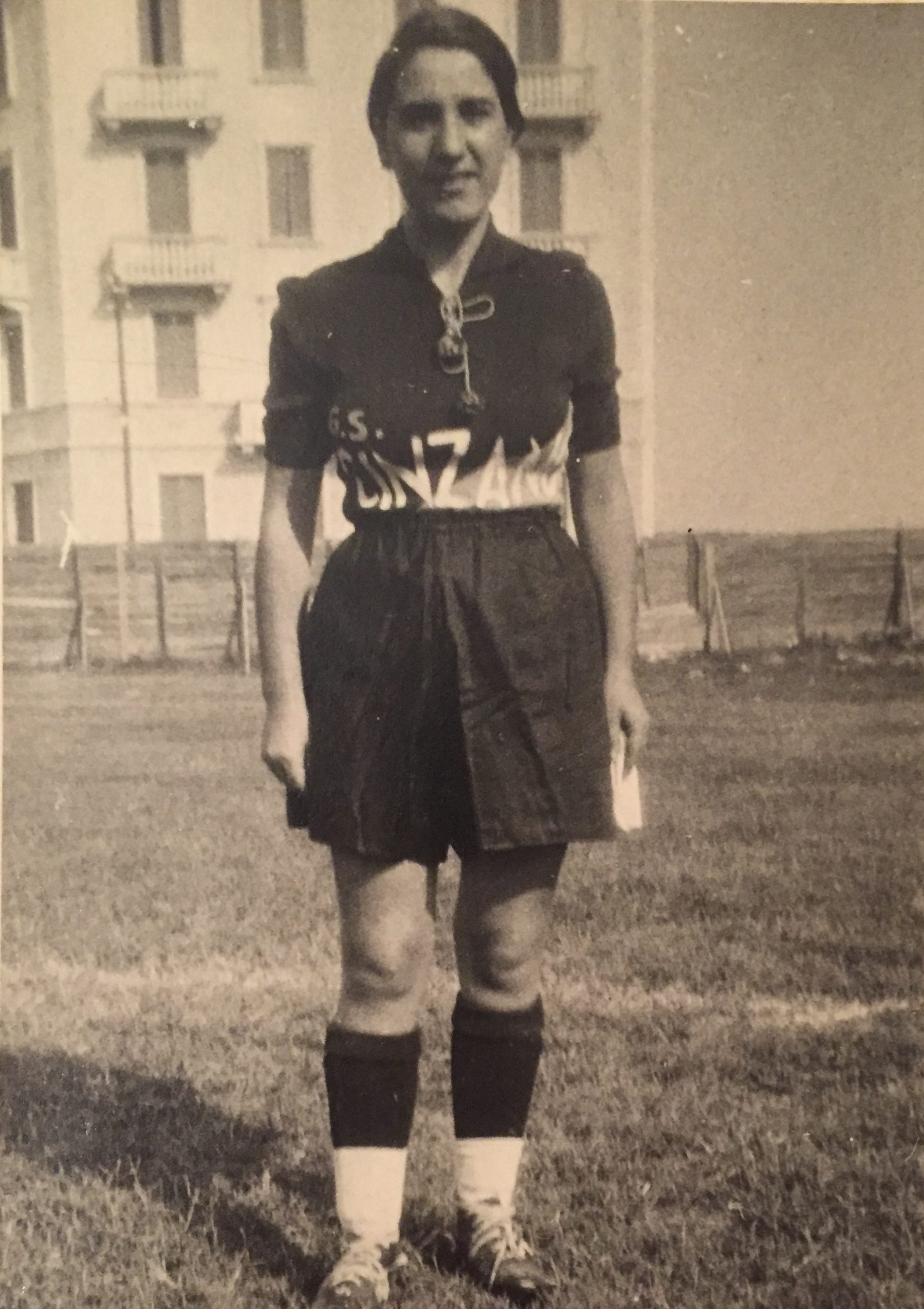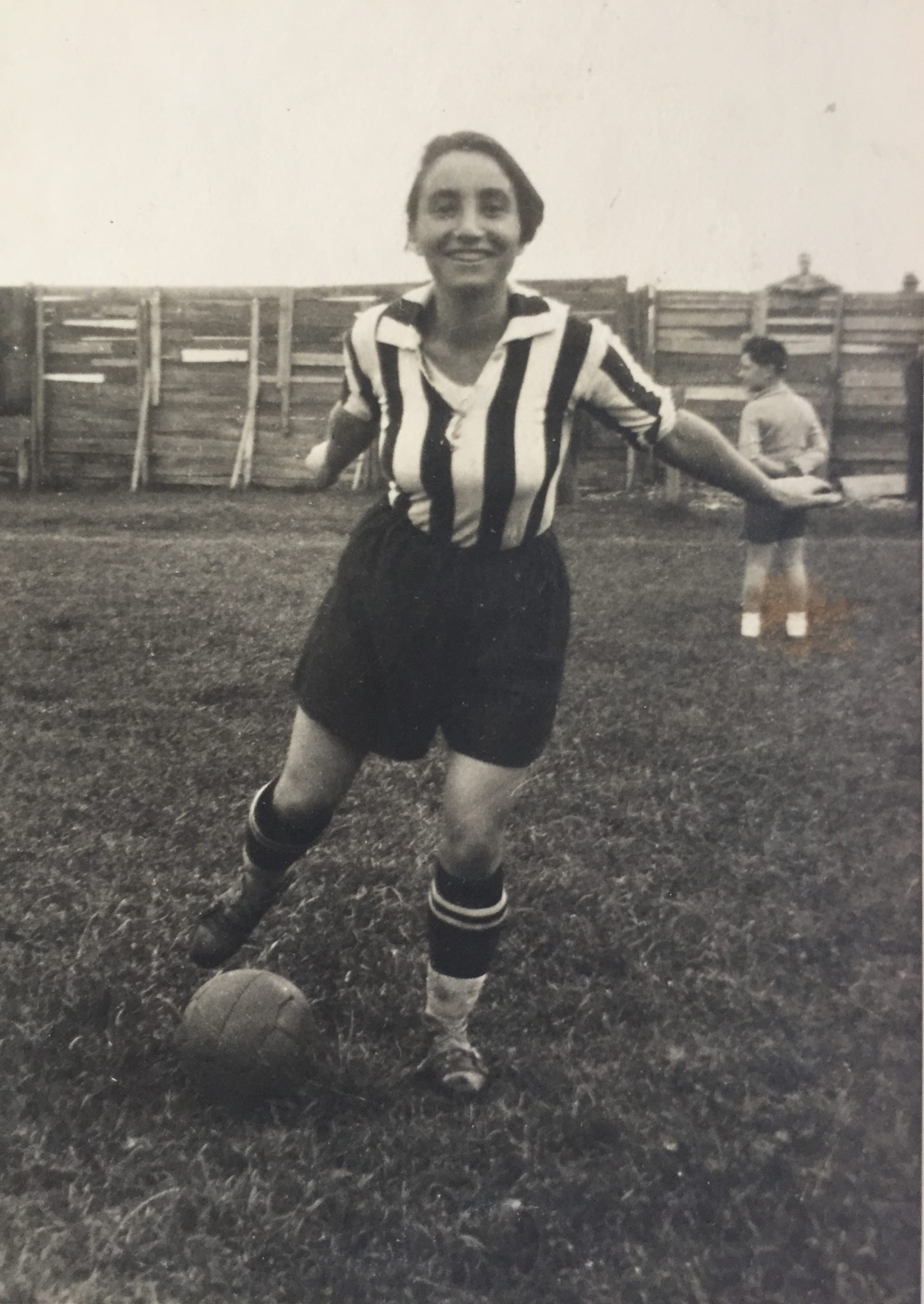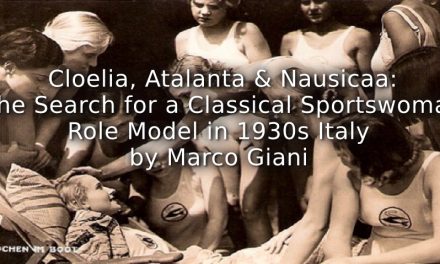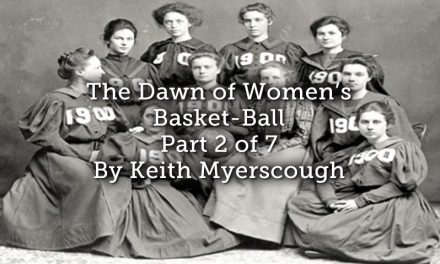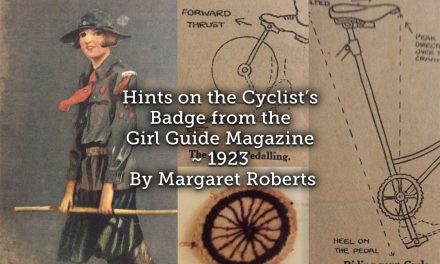For Parts 1 and 2 of this series see – bit.ly/2NBMzZg and bit.ly/2JKczw6
Original research by Marco Giani and with special thanks to Federica Buratti for the linguistic review and translation
In Part 3 Marco continues to discuss the unique photographs he has discovered of female footballers in Italy and in particular the Boccalini sisters:-
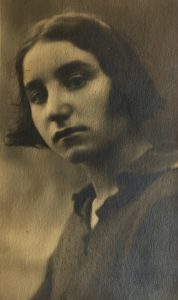
Gina as young girl (unknown year).
- Two months ago I visited the Milanese house of Rosa Mottino, the second daughter of Luisa “Gina” Boccalini (1906-1968), the eldest of the three Boccalini sisters who played football in 1933 (Giovanna was the eldest but she never played). After warmly welcoming me, Rosa and her husband Natale shared their familiar history … and a gorgeous set of photos, taken from Gina’s archives. Unlike all the other photos available before (taken from the Italian 1933 newspapers), these images have a high quality, which make it possible to distinguish clearly the faces of calciatrici, or to discover some details of the GFC equipment.
-
The Boccalini sisters
Rosetta (17), Gina (27), Marta (22
- Most of the photos kept in Gina’s archive don’t contain any useful date information and are not in any order, so we can’t know clearly which photos were taken on the same day. Up to now, they seemed to be taken on (at least) two different days. In the first group of photographs we see the calciatrici in black-and-white, and black-and-blue striped jerseys and in the second group, some of them are wearing a third type of jersey, the red-and-blue CINZANO one. Using this information, I was able to look through the newspapers archives AND I found that the depictions of the first group of images match with the newspaper reports written about late April-May 1933, with the second ones written after June 1933. Moreover, a photo from the first group was published by Il Calcio Illustrato sporting weekly on 24th of May, 1933 issue and a photo from the second group by Excelsior magazine on 11th October, 1933.
-
The photo group published by Il Calcio Illustrato in late May 1933.
Gina Boccalini is the 2nd player standing (smiling, in black-and-white jersey); Ninì Zanetti (3d), Mina Bolzoni (4th), Maria Bedetti (5th) and Pina Leva (6th) have been identified
Rosetta, wearing a black-and-blue jersey, is on her knee, in the centre, head-bent.
On her side, Navazzotti (in white jersey) and Dell’Era (wearing a beret).
The male teen goalkeepers – the third is thought to be Bandini.
-
Black-and-white, black-and-blue – CINZANO players warming up all together.
Although the photo was published in October by Excelsior, it could well have been taken even earlier (maybe in Summer 1933?).
Gina Boccalini might be the third player.
Please, note that in the Excelsior version the CINZANO players could scarcely be distinguished.
- Most of the photos weren’t taken during the game itself, but before or after it, there are team photos, and some images of the warm up, which as can be seen, the players did in line. Probably the photographer was a friend of the calciatrici, and they trusted him/her, as can be perhaps guessed from their happy and proud smiles.
- Warm up time. Starting from right, Rosetta is the 1st, Marta the 4nd (in CINZANO jersey).
- Warm up time
- The absence of men is quite astonishing. The women players wander across those deserted football pitches (which were provided by male amateur football teams, or by local Fascist sporting groups), all by themselves. Apart from the three teenage goalkeepers (they were really kids: no calciatrice could reasonably fall in love with them!), we can see that the other males were either relatives or male staff. To avoid the presence “peeping toms”, high fences were erected and can be seen in the background of the photos. For this reason, it could be argued that the images of the 2nd group weren’t taken during the two official (and public) matches in June and July, but during a training session, probably for promotional purposes.
-
The entry onto the field:
This is the same line-up of the 2 previous photos. The man, in white shirt and tie, is probably the coach: in that case, it’s more likely that he could be Piero Cardosi, the GFC Presiden’t son, who was just 23, than the older Umberto Marré, a retired professional football who played in the Italian Second Division in the late Twenties for U.S. Milanese (at that time, the third team in Milan, after Internazionale and Milan).
-
Marta Boccalini, Rosetta Boccalini, Gina Boccalini, a friend (Ester Dal Pan?).
In the front, the two children of Giovanna Boccalini Barcellona: the little boy (what an honour to be in presence of his mighty calciatrici-aunts!) is 7-year-old Giacomo “Popi” Barcellona, the little girl is Grazia Barcellona (4 years old), the future ice skating champion.
- Lastly, Gina’s photographs shed a light on the sports kit. We can SEE not only boots, socks and jerseys, but also knee-length skirts, and some further details: Mina Bolzoni, for example, can always be clearly distinguished not only by her noble countenance and by her slender figure, but also because she wore a flashy belt to keep her skirt up. Adding to this, another of Marta Boccalini’s photographs can help us better understand some elements of the CINZANO jerseys: 1) The “G. S.” (= Gruppo Sportivo, Sporting Team) sign was clearly overwritten – on a previous CINZANO jersey. 2) The upper part of the shirt wasn’t closed by a button (such as the black-and-white one: see the next of Gina’s images), but by laces, which end with what could be a tassel. The hypothesis is that this jersey wasn’t originally a football jersey, but rather a shirt re-purposed as sporting jersey. Since Ugo Cardosi, GFC President, was a vermouth and spirits dealer in Milan, maybe the jerseys came from another amateur sporting team sponsored by CINZANO, or they were just promotional shirt for the CINZANO publicity campaigns …
-
GS Cinzano line-up.
From left: Navazzotti (1st); Gina Boccalini (3nd); Ninì Zanetti (6th); Stroppa (7th); Frigerio (8th); Dal Pan (9th); Bolzoni (10th).
-
In this photo from the 1st group, you can see Rosetta with the Italian National flag.
Mina Bolzoni is the 4th on her knee, from the left.
- Marta Boccalini, wearing a CINZANO shirt
- Gina Boccalini, kicking a ball. In the background, her nephew Giacomo Barcellona
- Unlike her sister Marta (author of “Ricordando …”: see PART 1), Gina didn’t leave any oral memory of her sporting experiences: yet, these iconographical sources can help our understanding of what playing football in 1933 Italy looked like, and could improve our historic knowledge and reconstruction of the Milanese women’s football team.
To read Part 4 of this series please click HERE
For a new (Italian) article by Marco Giani published by «Archivio Storico Lodigiano» historical journal, see http://bit.ly/2t5Hajj .
Article & Images © Marco Giani

![“And Then We Were Boycotted” <br> New Discoveries About the Birth of Women’s Football in Italy [1933] <br> Part 3](https://www.playingpasts.co.uk/wp-content/uploads/2019/12/Marco-Giani-Boycotted-Part-3.jpg)
